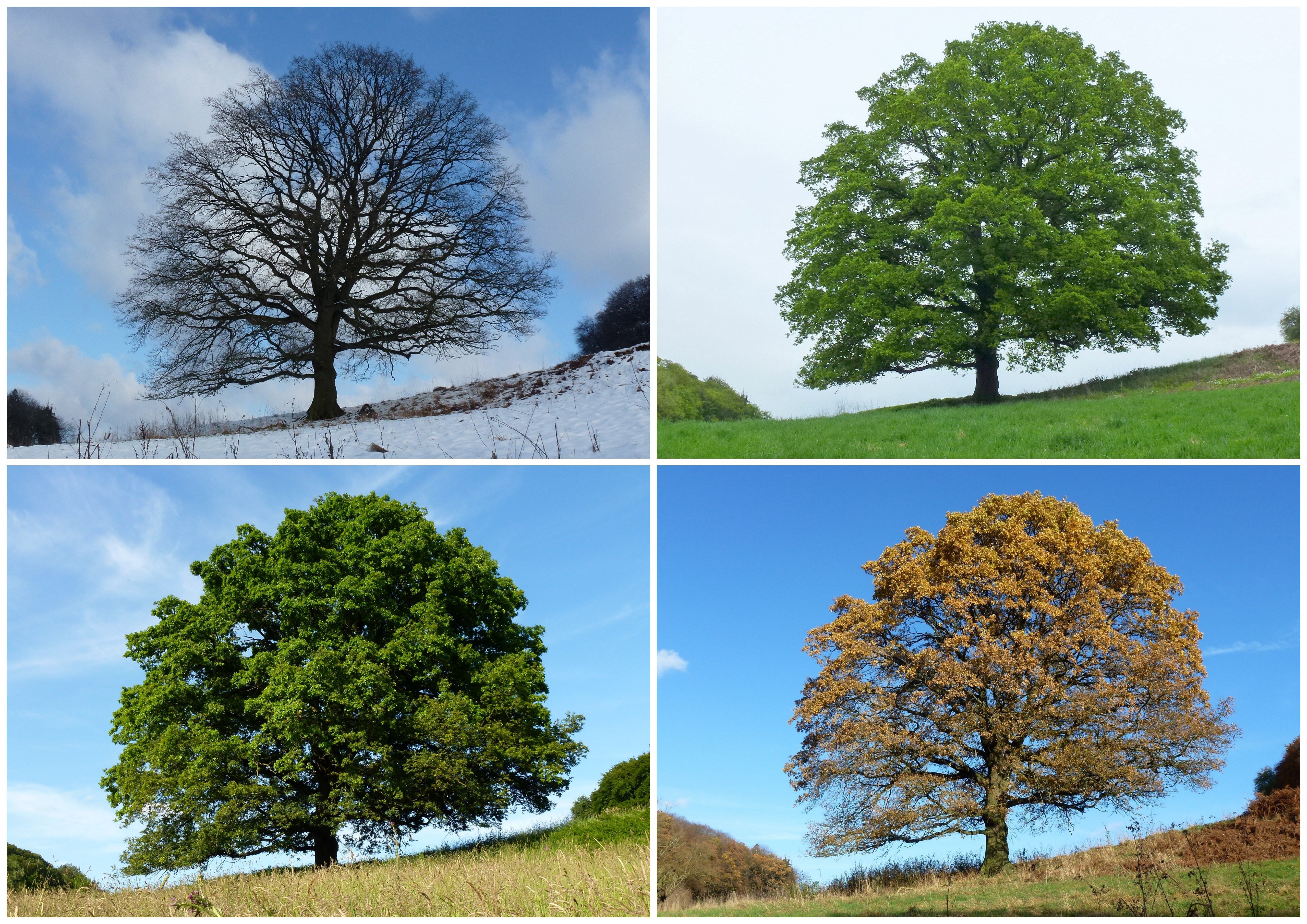¿Por qué existen las 4 estaciones del año? / Why do the 4 seasons of the year exist?
¿Por qué existen las 4 estaciones del año?
Why do the 4 seasons of the year exist?
- ¿Te habías preguntado por qué tenemos estaciones?
- Have you ever wondered why we have seasons?
Las estaciones del año, que son primavera, verano, otoño e invierno, son una parte natural y fascinante del ciclo de la Tierra. Aunque muchos podrían creer que se deben a la distancia entre la Tierra y el Sol, en realidad, las estaciones son resultado del movimiento del eje de nuestro planeta en relación a su órbita alrededor del Sol (Arriols, 2018; Sans, 2022).
La Tierra gira alrededor de sí misma en un ángulo de inclinación de 23,5 grados. Este ángulo permanece constante mientras la Tierra orbita alrededor del Sol a lo largo del año. Es esta inclinación la que hace que los rayos solares se dirijan de forma directa a un hemisferio determinado en ciertos momentos del año.
Durante el verano en el hemisferio norte, los rayos del Sol llegan directamente a esta región, mientras que, en ese mismo momento, el hemisferio sur experimenta invierno. Cuando los rayos solares se dirigen directamente al ecuador, es cuando se dan la primavera y el otoño.
La inclinación de la Tierra causa que los rayos solares se distribuyan de manera diferente en los polos y los trópicos, lo cual afecta la climatología y la duración del día en cada hemisferio. Estos cambios en la exposición a la luz solar y en la temperatura son lo que da lugar a las estaciones del año, tal y como las percibimos.
Las estaciones del año son de vital importancia para la vida en la Tierra. Los seres vivos, tanto plantas como animales, se han adaptado a los diferentes cambios ambientales que ocurren en cada estación. Por ejemplo, muchas plantas florecen en primavera cuando empieza a hacer calor y hay mayor disponibilidad de luz solar. Otros ejemplos son los animales migratorios, como las aves, que se desplazan en busca de temperaturas más favorables para su reproducción y supervivencia.
La comprensión de las estaciones del año es fundamental para entender y preservar los ecosistemas del planeta. Para enseñar este concepto a los niños, se puede utilizar un globo terráqueo y una fuente de luz, como una linterna. Mediante un experimento sencillo, los niños pueden observar cómo el cambio en la inclinación del globo afecta la cantidad de luz solar que recibe un lugar determinado.
Las estaciones del año son producto del movimiento de inclinación de la Tierra en relación a su órbita alrededor del Sol. Estas estaciones tienen un impacto significativo en los ecosistemas y en la vida en general, ya que los seres vivos se adaptan a los cambios en la exposición a la luz solar y en las temperaturas. Comprender este fenómeno es esencial para apreciar la belleza y fragilidad de nuestro planeta.
Cuatro estaciones templadas y subpolares: (arriba) invierno, primavera, (abajo) verano, otoño.
Four temperate and subpolar seasons: (above) winter, spring, (below) summer, autumn/fall.
J.hagelüken, CC BY-SA 3.0 <https://creativecommons.org/licenses/by-sa/3.0>, via Wikimedia Commons
The
seasons of the year, which are spring, summer, autumn, and winter, are a
natural and fascinating part of the Earth's cycle. Although many might
believe that they are due to the distance between the Earth and the Sun,
in reality, the seasons are the result of the movement of our planet's
axis in relation to its orbit around the Sun (Arriols, 2018; Sans, 2022).
The Earth spins on its axis at an angle of 23.5 degrees. This angle remains constant as the Earth orbits around the Sun throughout the year. It is this tilt that makes the sun's rays hit a specific hemisphere directly at certain times of the year.
During summer in the northern hemisphere, the Sun's rays hit this region directly, while, at that same moment, the southern hemisphere experiences winter. When the sun's rays hit the equator directly, it's when spring and autumn occur.
The Earth's tilt causes the sun's rays to be distributed differently at the poles and the tropics, which affects the climatology and the duration of the day in each hemisphere. These changes in exposure to sunlight and temperature are what give rise to the seasons of the year, as we perceive them.
The seasons of the year are of vital importance for life on Earth. Living beings, both plants and animals, have adapted to the different environmental changes that occur in each season. For example, many plants bloom in spring when it starts to get warm and there is more availability of sunlight. Other examples are migratory animals, like birds, which move in search of more favorable temperatures for their reproduction and survival.
Understanding the seasons of the year is fundamental to understanding and preserving the planet's ecosystems. To teach this concept to children, you can use a globe and a light source, like a flashlight. Through a simple experiment, children can observe how the change in the globe's tilt affects the amount of sunlight a certain place receives.
The seasons of the year are a product of the Earth's tilt movement in relation to its orbit around the Sun. These seasons have a significant impact on ecosystems and life in general, as living beings adapt to changes in exposure to sunlight and temperatures. Understanding this phenomenon is essential to appreciate the beauty and fragility of our planet.
Referencias / References:
Arriols, E. (2018). Por qué existen las estaciones del año. Ecología Verde. https://www.ecologiaverde.com/por-que-existen-las-estaciones-del-ano-1639.html
Sans, I. (2022). ¿Por qué existen las estaciones? Clima. https://www.clima.com/noticias/por-que-existen-las-estaciones
Sans, I. (2022). ¿Por qué existen las estaciones? Clima. https://www.clima.com/noticias/por-que-existen-las-estaciones
Cómo citar este artículo:
Nocetti, F.A. (2023). ¿Por qué existen las 4 estaciones del año? NabbuBlog. http://nabbublog.blogspot.com/2023/07/por-que-existen-las-4-estaciones-del.html
How to cite this article:
Nocetti, F.A. (2023). Why do the 4 seasons of the year exist? NabbuBlog. http://nabbublog.blogspot.com/2023/07/por-que-existen-las-4-estaciones-del.html

